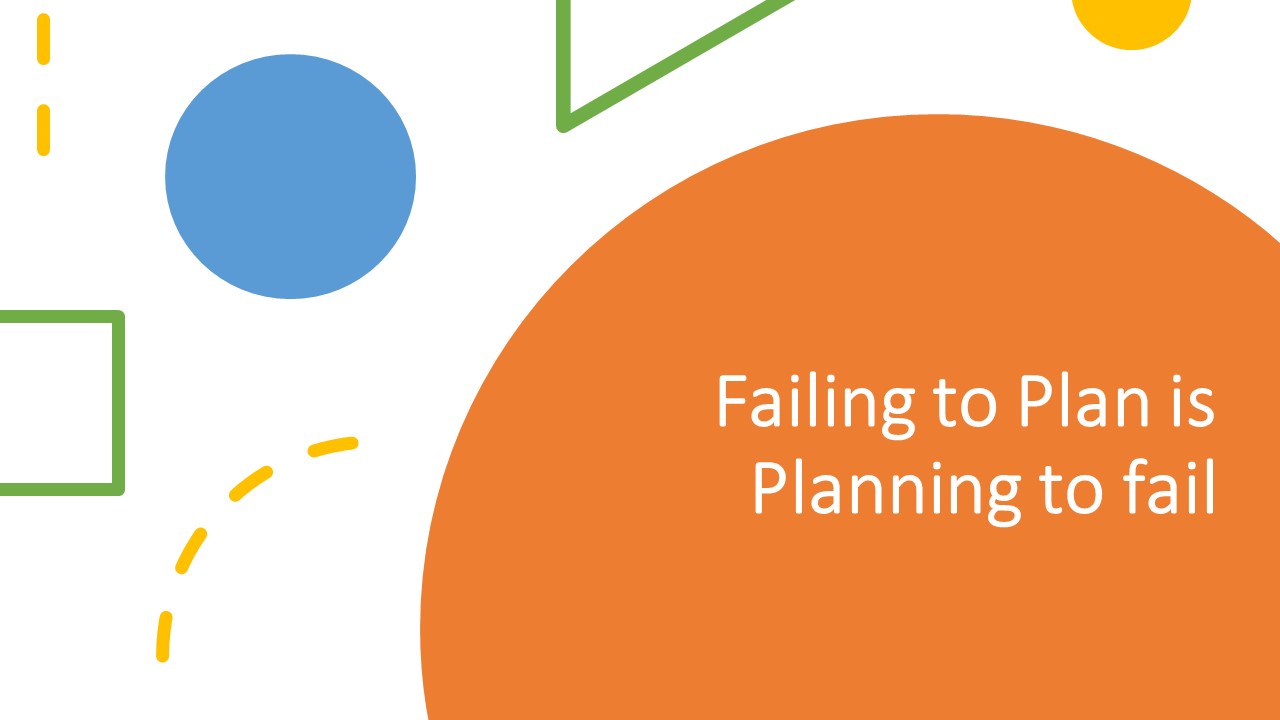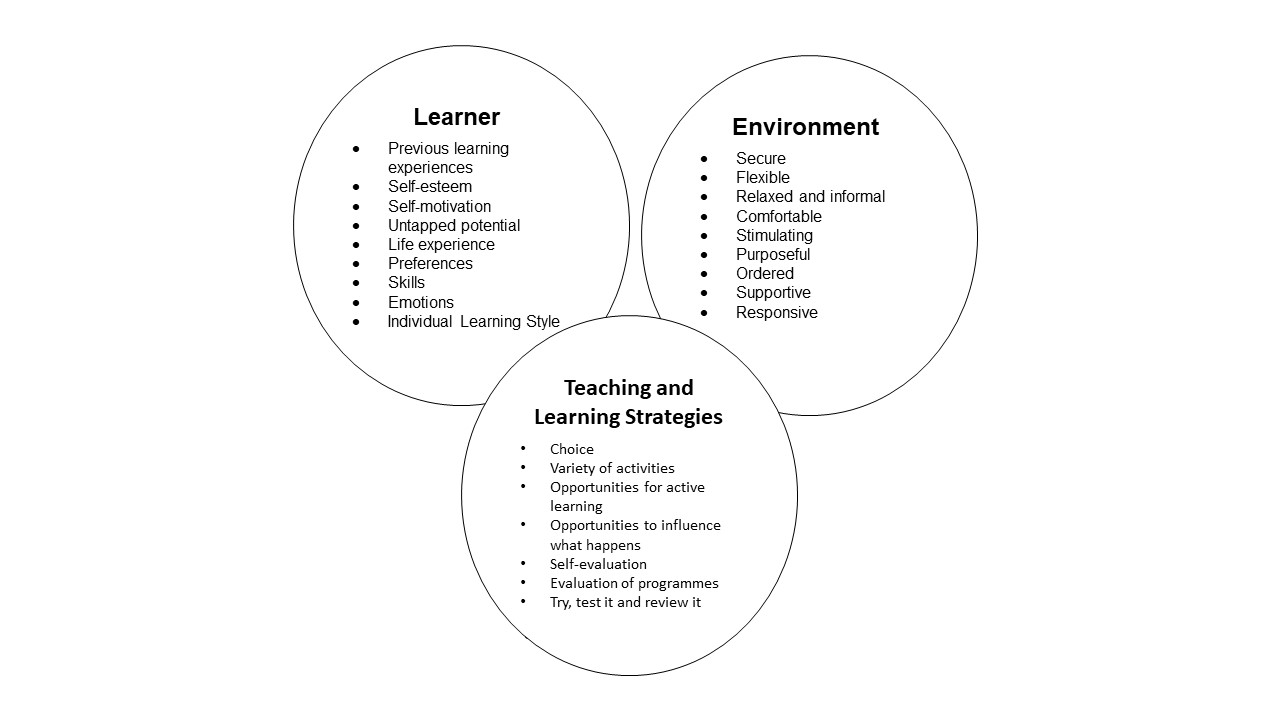Teaching and Learning - good practice
| Site: | Hampshire Participation and Lifelong Learning |
| Course: | Tutor Handbook |
| Book: | Teaching and Learning - good practice |
| Printed by: | Guest user |
| Date: | Wednesday, 10 December 2025, 4:29 PM |
Preparation
For every hour spent in the classroom you can expect to spend another hour planning and preparing (dependant on experience)
A well-prepared session:
- Allows sufficient time for activities
- Has clearly stated SMART objectives that are understood by learners
- Meets the course objectives and requirements of the scheme of work
- Has a session plan which incorporates outcomes from initial and ongoing learner assessment (including health status assessments for sports/exercise & dance classes)
- Has all necessary resources prepared in advance of the session
- Builds on learners’ prior knowledge
Plans for activities that allow for learners’ different abilities and learning styles

Delivery
A well
delivered session:
Ensures that all learners meet their maximum potential
- Is taught by an enthusiastic tutor with expertise in the subject.
- Ensures that all learners are clear about what they are expected to do
- Involves learners in a variety of activities over a period of time. Avoids, where possible, long periods of tutor exposition
- Begins with a clear introduction, linking it to previous sessions and to the course, and explaining the session objectives
- Recognises the fact that people learn in different ways; at different speeds; at different levels and so needs to provide a range of activities to allow for this
- Is delivered at a suitable pace
- Is stimulating and challenging
- Allows learners to participate or be otherwise actively involved
- Makes use of high-quality teaching and learning resources including e-learning where possible
- Encourages learners to work independently at times, both during and after the session
- Demonstrates effective tutor/learner relationships
- Contains frequent checks on understanding by the tutor and the learners themselves
- Ensures that theory and practice are integrated and referred to where possible
- Deviates from the lesson plan if necessary to ensure learner understanding
- Includes effective assessment of all learners’ progress
- Has learning materials, which are free from stereotyping and positive images in terms of gender, race and disability
- Concludes with a clear summing up of what has been covered
A well delivered practical session:
- Ensures that health and safety considerations are always observed
- Has industry-standard equipment and facilities
- Checks that learners know how to operate any specialist equipment
- Has activities that reflect industrial or commercial practice
- Ensures that learners have enough theoretical understanding before embarking on practical work
- Has clearly explained practical demonstrations that are clearly visible to all learners
- Allows learners enough time to practise their skills
- Ensures that learners are making progress towards acquiring the standards required by the workplace
- Ensures that tutors manage to give attention to every learner and understand the progress being made by individuals
A well delivered theory lesson in a vocational subject:
- Ensures that links are made between theory and practice wherever possible
- Considers delivering the theory in a practical setting (e.g. in a workshop) and integrating the two elements
Makes use of learner experience of the workplace through questions and discussions
Managing learners and the learning environment
Good
management of learning ensures that:
- Staff are suitably experienced, qualified, and trained
- Poor attendance and punctuality are monitored, and action taken promptly
- Learners use their time effectively
- There is equality of opportunity in terms of the treatment of learners
- Learners are encouraged to work collaboratively
- Equipment and facilities are suitable for the purpose
- The accommodation is conducive to good learning
- Provides a stimulating learning environment eg displaying learners’ work and other materials in the room
Assessment
- Is accurate, valid, learner-centred and undertaken on a timely and regular basis
- Is appropriate for the course and helps learners develop the necessary skills, knowledge and understanding
- Conforms to awarding body requirements, where appropriate
- Ensures that assessed work is returned promptly
- Monitors learners’ progress and gives clear information about progress being made
- Tells individuals how they could improve through both verbally and written positive and constructive comments on work
- Involves formative assessment to check on learning. This may be through written work, questioning, in class or for homework
- Sets targets for improvement that are challenging but achievable
- Is recorded
- Helps identify additional learning needs
What Enables Effective Learning to Take Place?
When
developing and running a session it is important to consider:
- Who (the learner)
- Where (The environment)
- How (the teaching and learning strategies you and the learner use

Teaching and Learning Activities
You
will be aware of a whole range of teaching and learning activities to keep you
and your learners interested and motivated.
Make sure you use a mixture so that different learning styles are met.
The list below is just a few of the different learning activities you could use.
- Assignments
- Buzz Groups
- Case Studies
- Demonstrations
- Discussion
- Games
- Group Work
- Lecture
- Learning Log
- Observation
- Practical Work
- Project
- Question and Answer
- Research
- Role Play
- Talk and Chalk
- Audio/Video technologies
- Visits
- Worksheets